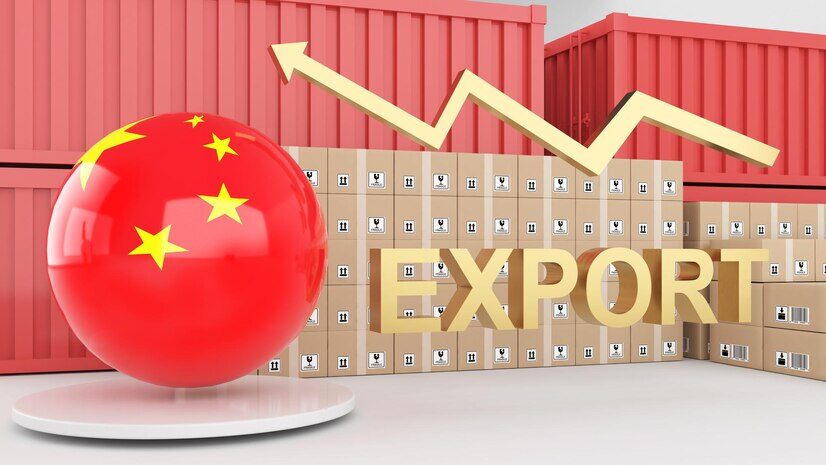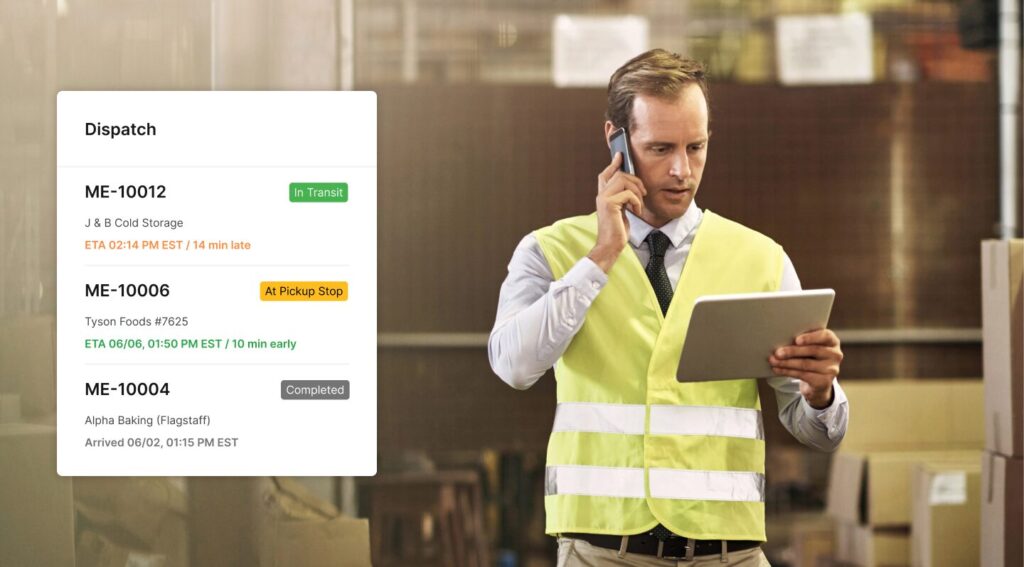If you are planning to ship goods from China to Hamburg, Germany, you might be wondering about the best way to do it. There are many factors to consider, such as the cost, the transit time, the documentation, and the packaging. In this article, we will explain the advantages of FCL (full container load) shipments, the China shipping process, how to choose the right shipping provider, and what to expect when shipping from China to Hamburg.
Advantages of FCL Shipments

FCL, or full container load, means that your goods fill an entire container, either 20’ or 40’ long. This has several benefits compared to LCL (less than container load), where your goods share a container with other shippers. Some of the advantages of FCL are:
- You have more control over the loading and unloading of your goods, as you can seal the container at the origin and open it at the destination.
- You can save time and money by avoiding the consolidation and deconsolidation process that LCL shipments require.
- You can reduce the risk of damage or loss of your goods, as they are not handled by multiple parties or mixed with other cargo.
- You can enjoy lower freight rates per unit, as FCL is charged as a flat rate regardless of the weight or volume of your goods.
Understanding the China Shipping Process

The China shipping process involves several steps, from preparing your goods to clearing customs at the destination. Here is a brief overview of the main stages:
- Preparation: You need to pack and label your goods according to the international standards and the requirements of your shipping provider. You also need to prepare the necessary documents, such as the commercial invoice, the packing list, the bill of lading, and the certificate of origin.
- Pick-up: Your shipping provider will arrange the pick-up of your goods from your warehouse or factory in China and transport them to the nearest port of departure.
- Export clearance: Your goods will undergo the export clearance process at the Chinese customs, where they will check the documents and inspect the goods. You might need to pay some fees or taxes depending on the type and value of your goods.
- Ocean freight: Your goods will be loaded onto a container ship and sail from China to Germany. The transit time will depend on the origin and destination ports, the shipping route, and the weather conditions.
- Import clearance: Your goods will arrive at the port of Hamburg and go through the import clearance process at the German customs. They will verify the documents and inspect the goods. You might need to pay some duties or taxes depending on the type and value of your goods.
- Delivery: Your shipping provider will arrange the delivery of your goods from the port of Hamburg to your final destination in Germany. You can choose between different modes of transportation, such as truck, rail, or air.
Choosing the Right Shipping Provider

One of the most important decisions you need to make when shipping from China to Hamburg is choosing the right shipping provider. There are many options available, from freight forwarders to online platforms. Here are some factors to consider when choosing a shipping provider:
- Experience: You want to work with a shipping provider that has experience in handling FCL shipments from China to Germany and knows the local regulations and procedures.
- Reliability: You want to work with a shipping provider that can deliver your goods on time and in good condition, and that can handle any issues or delays that might arise during the shipping process.
- Flexibility: You want to work with a shipping provider that can offer you different options and solutions for your shipping needs, such as different shipping routes, transit times, and prices.
- Transparency: You want to work with a shipping provider that can provide you with clear and accurate information about your shipment, such as the freight rates, the transit times, the tracking options, and the hidden fees or charges.
- Customer service: You want to work with a shipping provider that can provide you with professional and friendly customer service, and that can answer your questions and resolve your problems quickly and efficiently.
Factors to Consider When Shipping from China to Hamburg

When shipping from China to Hamburg, there are some factors that you need to consider and plan ahead, such as:
- The origin and destination ports: The choice of the origin and destination ports will affect the transit time and the cost of your shipment. For example, according to the web search results, the port-to-port transit time for shipping FCL from Shanghai to Hamburg is 37 days for LCL and 40 days for FCL, while the transit time from Shanghai to Bremerhaven is 46 days for FCL. The freight rates will also vary depending on the supply and demand of the shipping lanes. For example, according to the web search results, the FCL ocean freight rate for a 40’HC container from Tianjin to Gdańsk is 4500-6000 USD, while the rate from Xiamen to Hamburg is 5000-6000 USD.
- The season and the weather: The season and the weather can affect the availability and the price of the shipping space, as well as the transit time and the safety of your goods. For example, during the peak season (usually from August to October), the demand for shipping space is higher, which can lead to higher freight rates and longer transit times. On the other hand, during the winter season (usually from November to March), the weather conditions can be harsh, which can cause delays or damage to your goods.
- The type and value of your goods: The type and value of your goods can affect the documentation and the customs requirements, as well as the duties and taxes that you need to pay. For example, some goods might require special permits or certificates, such as food, plants, animals, or hazardous materials. Some goods might also be subject to anti-dumping or countervailing duties, such as steel, solar panels, or bicycles. You need to check the tariff classification and the origin of your goods to determine the applicable duties and taxes.
Documentation and Customs Requirements for FCL Shipments

When shipping FCL from China to Hamburg, you need to prepare and submit the following documents:
- Commercial invoice: This document provides information about the seller, the buyer, the goods, and the terms of sale. It is used to calculate the duties and taxes, and to verify the value and the origin of the goods.
- Packing list: This document provides information about the quantity, the weight, the dimensions, and the description of the goods. It is used to check the accuracy and the completeness of the shipment, and to facilitate the loading and unloading of the goods.
- Bill of lading: This document serves as a contract of carriage, a receipt of goods, and a proof of ownership. It provides information about the shipper, the consignee, the carrier, the goods, and the shipping details. It is used to claim the goods at the destination port, and to settle any disputes or claims that might arise during the shipping process.
- Certificate of origin: This document certifies the origin of the goods, and is required for some preferential trade agreements or customs regimes. It is used to determine the eligibility of the goods for lower or zero duties and taxes, and to comply with the rules of origin.
You need to submit these documents to the customs authorities at both the origin and the destination ports, and comply with their regulations and procedures. You might also need to provide additional documents or information, depending on the type and value of your goods, such as:
- Import/export license: This document authorizes you to import or export certain goods, such as restricted or controlled items, or goods that exceed a certain value or quantity.
- Inspection certificate: This document verifies the quality, the quantity, or the conformity of the goods, and is issued by a third-party inspection agency, such as SGS or Bureau Veritas.
- Fumigation certificate: This document certifies that the goods or the packaging have been treated with fumigation to prevent the spread of pests or diseases, and is required for some wooden or plant-based materials.
- Insurance certificate: This document proves that you have purchased insurance coverage for your goods, and provides information about the insured value, the policy number, and the contact details of the insurance company.
Packaging and Labeling Guidelines for FCL Shipments

When shipping FCL from China to Hamburg, you need to follow some packaging and labeling guidelines to ensure the safety and the security of your goods, and to avoid any delays or penalties. Here are some tips:
- Use sturdy and durable packaging materials, such as wooden crates, pallets, cartons, or plastic wrap, to protect your goods from damage or loss during the shipping process.
- Secure and seal your goods properly, using straps, tapes, or locks, to prevent them from shifting or falling during the loading and unloading of the container.
- Label your goods clearly and accurately, using waterproof and legible labels, to provide information such as the shipper’s name and address, the consignee’s name and address, the port of origin and destination, the container number, the seal number, the number and type of packages, the gross weight and net weight, the description of the goods, and any special handling instructions or symbols.
- Comply with the international standards and the requirements of your shipping provider, such as the ISPM 15 for wooden packaging materials.
Transit Times and Tracking Options for China Shipping to Hamburg

The transit time for shipping FCL from China to Hamburg depends on several factors, such as the origin and destination ports, the shipping route, the weather conditions, and the customs clearance process. According to the web search results, the average transit time for shipping FCL from China to Hamburg is 40 days, but it can vary from 30 to 50 days depending on the specific circumstances.
To track your shipment, you can use the tracking number or the container number that your shipping provider will give you. You can enter this number on the website of your shipping provider or the carrier, and you will be able to see the status and the location of your shipment. You can also use some online platforms, such as [MarineTraffic] or [VesselFinder], to track the movement of the container ship that carries your goods.
Some shipping providers might also offer you additional tracking options, such as GPS tracking, real-time notifications, or online dashboards, to give you more visibility and control over your shipment. You can ask your shipping provider about the available tracking options and the costs involved.
Cost Considerations and Budgeting for FCL Shipments

The cost of shipping FCL from China to Hamburg is determined by several factors, such as the size and the weight of your goods, the origin and destination ports, the season and the demand, the shipping provider and the carrier, and the documentation and the customs fees. According to the web search results, the average cost of shipping FCL from China to Hamburg is 5000-6000 USD for a 40’HC container, but it can vary from 4000 to 7000 USD depending on the specific circumstances.
To budget for your shipment, you need to consider the following cost components:
- Ocean freight: This is the fee that you pay to the carrier or the shipping provider for transporting your goods from China to Germany by sea. It is usually charged as a flat rate per container, regardless of the weight or volume of your goods.
- Origin charges: These are the fees that you pay at the origin port, such as the terminal handling charge, the documentation fee, the export clearance fee, the inspection fee, or the pick-up fee.
- Destination charges: These are the fees that you pay at the destination port, such as the terminal handling charge, the documentation fee, the import clearance fee, the inspection fee, or the delivery fee.
- Duties and taxes: These are the fees that you pay to the customs authorities at the destination port, such as the import duty, the value-added tax, the anti-dumping duty, or the countervailing duty.
- Insurance: This is the fee that you pay to the insurance company for covering the risk of damage or loss of your goods during the shipping process.
You can ask your shipping provider for a detailed quotation that includes all the cost components, and compare it with other shipping providers to find the best option for your shipment. You can also use some online calculators, such as [Freightos] or [WorldFreightRates], to get an estimate of the cost of shipping FCL from China to Hamburg.





